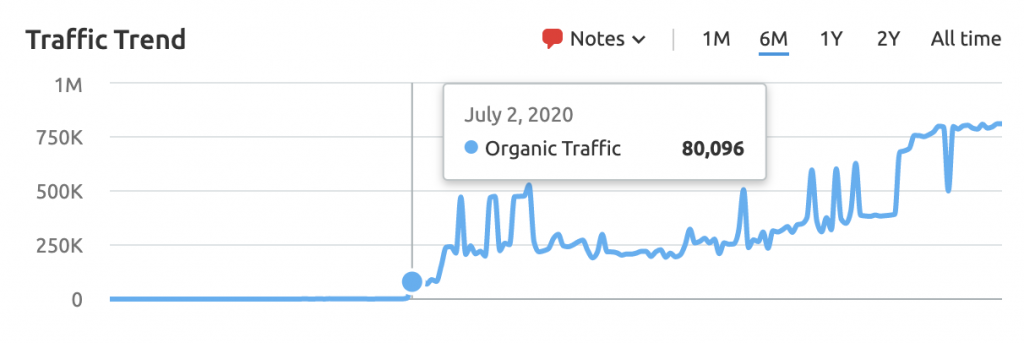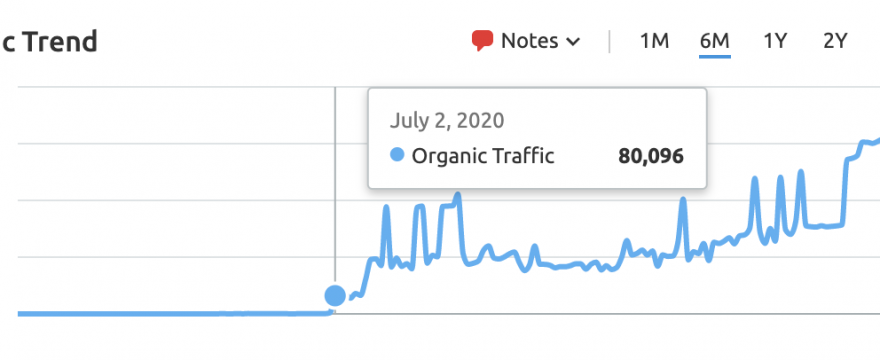Bear with me on this idea.
As I obsess over “low hanging fruit” this and “high leverage” that or content organization as the solution to all your web-based marketing problems, I can’t help but think that any outsized return is simply a function of you having ignored some dimension too long.
So these big blindspots start showing up and an outsider can come in and say, “hey, you’re really weak over here, let’s prop this up with more x and improve that over there with better y” and then suddenly this person “opened up the floodgates to profitable traffic.”
But, no they didn’t.
Whether orgs as experts or experts as orgs, I’m having trouble coming up with exceptions here.
Here’s a third party (semrush.com) chart of a migration I consulted on launched in July:

I would love to take credit for this. Zero to 500k estimated monthly traffic in just under 30 days of the new site going live. But it wasn’t anything magical.
That traffic spike is a function of pent up demand, a longstanding organizational leadership’s fear of the internet, a bias toward and comfort in the status quo of B2B when consumers were screaming for DTC.
In fact the client ignored a lot of my advice and it was still a successful effort.
For experts, when you have holes in your digital marketing, it’s driven on one end by things like fear, uncertainty, not knowing what you don’t know. On the other end by your propensity to spend more energy doing what you do best – thinking, writing, performing.
Experts as companies operate out of habit, a series of daily processes and seasonal activities that add up to a decent living (or not). Habits are driven by rewards and those rewards are a matter of repetition.
This action reward loop relegates you to a very specific, predictable, trajectory. Eerily predictable.
Here’s an example.
I watched an expert tear down a freelancer as agency website last week. The advice for the homepage was to remove any CTAs besides the primary “book a call” one.
What.
Turn your homepage into a squeeze page for booking a call?
Let’s say based on that advice, this person turns their homepage into a squeeze lander for a late stage multi-step CTA like a calendly signup. They will then go back to whatever their existing expert process mix was.
At some point they will hit a tipping point of traffic, and then be delighted by the “book a call” lead rate. Now they’ve bee rewarded for a mistake because of an existing narrow process orientation.
Even if this results in a few more calls, the net difference will be from users who did so because they had no other choice. You’re pushing people off the fence who aren’t ready. But it will feel like a good thing because of the lead rate.
The extra close or two from this will pale in comparison over time to the lost marketing efficiencies of allowing users to get to where they more naturally fit in a funnel.
Have you ever seen a company with a squeeze lander homepage? They seem to have no problem understanding this.
Just like the job of the hotel lobby isn’t to sell you a longer stay, the job of the homepage is not to squeeze users into a specific late stage action (or early stage action for that matter.)
You hit some tipping point, some big win, some unexpected sale, and you are delightfully surprised, think about it, are you misattributing the source of that success?
Improving your behavior when you’re misattributing the source of a reward is… hard.
And then when you finally fix it, the outsized returns look like a big win, not a lesson learned.
